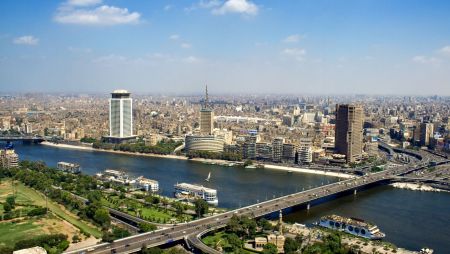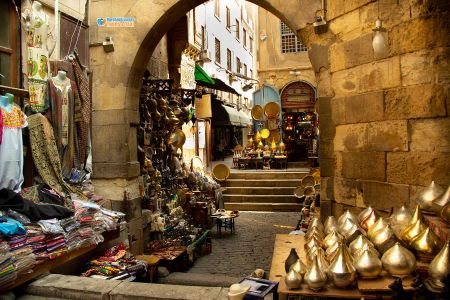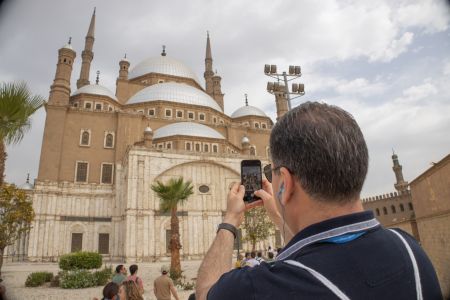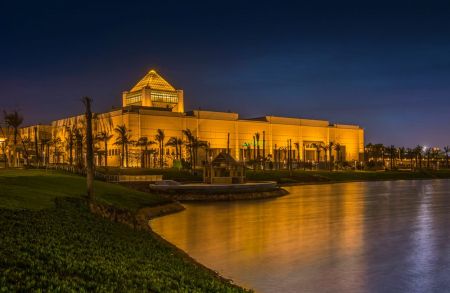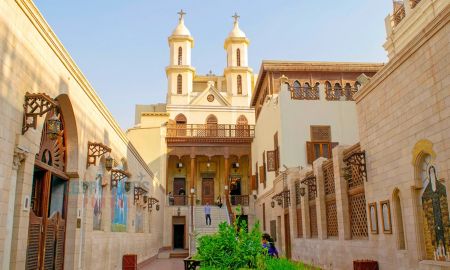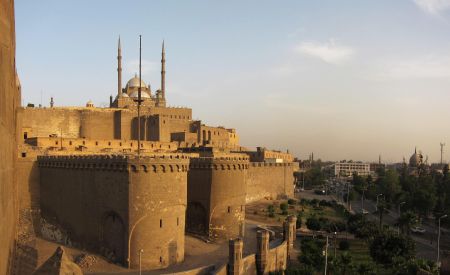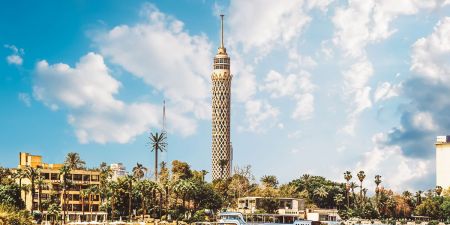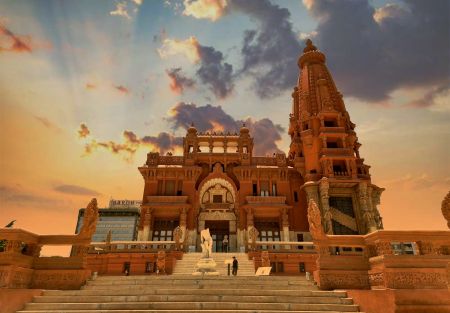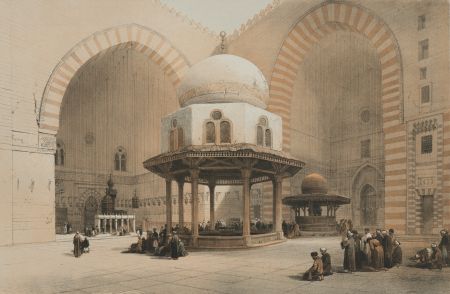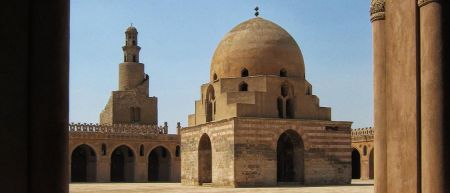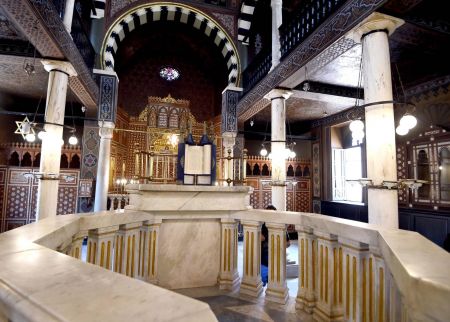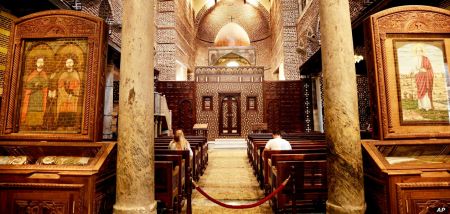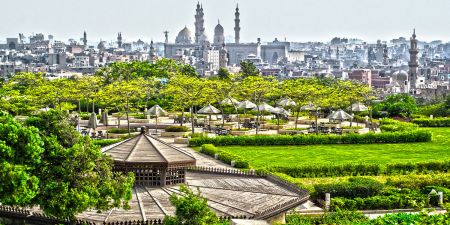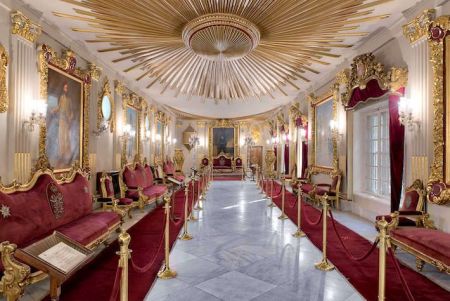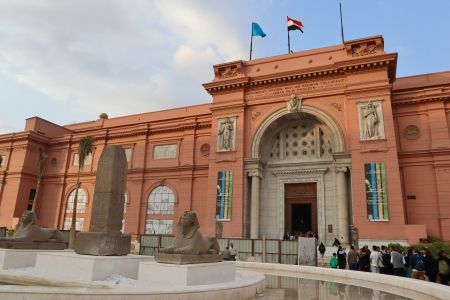Al Rifai Mosque : A Royal Masterpiece in the Heart of Cairo

Nestled in the heart of Islamic Cairo, Al Rifai Mosque stands not merely as a religious edifice but as a regal symbol of Egypt’s royal legacy and architectural splendor. Often overshadowed by its more ancient neighbors, this colossal structure commands attention with its ornate façade, towering minarets, and marble-draped interiors. Located directly opposite the historic Mosque-Madrassa of Sultan Hassan, Al Rifai Mosque acts as a cultural counterpoint, embodying Egypt’s modern era aspirations while paying tribute to Islamic art and tradition.
Constructed between 1869 and 1912, the mosque was part of a 19th-century campaign by Egypt’s elite to modernize Cairo in line with European capitals. Khoshiar Hanim, the mother of Khedive Ismail, initiated its design as a royal mausoleum and spiritual complex, intended to project the ruling dynasty’s prestige. What followed was an epic architectural journey spanning four decades, involving prominent architects like Hussein Fahmy Pasha and Max Herz Bey. Today, Al Rifai Mosque holds the tombs of royal figures including King Farouk I and even Iran’s last Shah, Mohammad Reza Pahlavi.
Whether you're an architecture enthusiast, a spiritual seeker, or a history buff, visiting Al Rifai Mosque offers a rich blend of historical narrative, spiritual resonance, and artistic excellence—making it a must-see in any Cairo itinerary.
The Historical Significance of Al Rifai Mosque
Origins of a Monumental Vision
The origins of Al Rifai Mosque trace back to a pivotal time when Egypt was on the cusp of transformation. Khoshiar Hanim envisioned a majestic sanctuary not just for worship, but also as a final resting place for the Muhammad Ali dynasty. The mosque was intended to mirror Egypt’s ambition to align itself with Western architectural ideals, while staying rooted in Islamic traditions.
Architectural Timeline and Delays
Construction of Al Rifai Mosque began in 1869 but faced numerous delays due to political turmoil and shifts in royal priorities. It wasn’t completed until 1912 under Khedive Abbas Helmy II. The elongated timeline led to a fusion of architectural styles—Ottoman, Mamluk, and European—that gives the mosque its distinctive character today.
Architectural Grandeur of Al Rifai Mosque
Exterior Brilliance and Facade Design
From afar, Al Rifai Mosque captivates with its intricate stone carvings, elaborate muqarnas (stalactite designs), and grand pointed arches. The facade alone stretches 6,500 square meters, a testament to Egypt’s opulent taste during the 19th century. Large bronze doors welcome visitors, each bearing calligraphy verses and geometric motifs inspired by Mamluk aesthetics.
Majestic Minarets and Domes
Soaring minarets flank the structure, measuring over 84 meters high. These twin spires are adorned with vertical grooves and domed finials, making them stand out across Cairo’s skyline. The mosque's central dome is finely gilded and patterned with Quranic inscriptions and Arabesque flourishes, symbolizing spiritual ascension.
Interior Marble Elegance
Step inside and you're greeted by polished marble columns, colorful inlaid stone, and gilded ceilings. The interior features Italian alabaster, massive chandeliers, and hand-painted tiles that blend Ottoman grandeur with Mamluk precision. Rows of stained glass windows filter in golden sunlight, adding an ethereal glow to the prayer hall.
The Mihrab and Minbar Design
The mihrab, adorned with mother-of-pearl and turquoise inlays, points faithfully toward Mecca. Beside it stands a carved wooden minbar (pulpit) echoing Ottoman craftsmanship. The symmetry and detailing reflect deep reverence for both function and beauty.
Sail through history on our 4 Day Nile Cruise from Aswan to Luxor book now and experience Egypt’s timeless wonders.
Spiritual Role and Functionality of Al Rifai Mosque
A Living House of Worship
Despite its royal affiliations, Al Rifai Mosque remains a functioning place of prayer. Locals and tourists alike attend daily prayers, Friday sermons, and special Ramadan services. The mosque’s acoustics and design foster a serene spiritual atmosphere, undisturbed by the urban chaos outside.
A Center for Sufi Heritage
The mosque is named after Sheikh Ali al-Rifai, a revered Sufi saint whose tomb is located within its premises. Many pilgrims visit to pay respects, offering prayers at his shrine. The mosque has thus evolved into both a royal and Sufi sanctuary—a dual spiritual identity rare in Cairo.
Royal Tombs and Notable Burials in Al Rifai Mosque
The Mausoleum of Khedive Ismail
Beneath the mosque’s marble floors lie the remains of Khedive Ismail and his family. His tomb is intricately decorated, echoing the grandeur of his reign. The mausoleum is not open to the general public at all times, adding a layer of mystique to the visit.
Resting Place of King Farouk I
King Farouk I, Egypt’s last reigning monarch before the 1952 revolution, is interred here. His tombstone is marked with the Egyptian royal insignia and receives regular visits from royalist sympathizers and historians alike.
Shah of Iran’s Final Resting Place
Perhaps the most unexpected figure buried in Al Rifai Mosque is Mohammad Reza Pahlavi, the last Shah of Iran. Exiled after the 1979 revolution, he died in Cairo and was granted asylum and burial by Egyptian President Anwar Sadat. His tomb draws Iranians and international visitors, reflecting the mosque’s global resonance.
Visiting Al Rifai Mosque – What You Need to Know
Location and Accessibility
Al Rifai Mosque is centrally located in the Salah El-Din Square, adjacent to the Citadel and directly opposite the Sultan Hassan Mosque. The area is well-serviced by taxis and tour buses, and it’s best visited in the morning for optimal lighting and reduced crowds.
Entry Requirements and Dress Code
The mosque is open daily, and while entry is usually free, a small donation is encouraged. Visitors should dress modestly—long sleeves and covered legs—and women are advised to bring a scarf to cover their heads.
Photography Tips and Guided Tours
Photography is allowed, though flash is discouraged. For a deeper understanding of its layered history, hire a certified guide or use an audio tour. This enhances the experience and uncovers lesser-known details about the mosque’s architecture and inhabitants.
Why Al Rifai Mosque Stands Out Among Cairo’s Religious Sites
A Fusion of Politics, Piety, and Prestige
Unlike purely spiritual structures, Al Rifai Mosque serves as a monumental expression of political power, religious devotion, and artistic ambition. It bridges Cairo’s past and present, blending dynastic history with living worship.
A Counterpart to Sultan Hassan Mosque
Standing face to face with the Sultan Hassan Mosque, Al Rifai represents a later, more European-influenced interpretation of Islamic architecture. While Sultan Hassan echoes medieval austerity, Al Rifai showcases late Ottoman opulence—a dual narrative playing out in stone and space.
Nearby Attractions Around Al Rifai Mosque
One of the great advantages of visiting Al Rifai Mosque is its location in the very heart of historic Cairo, surrounded by some of the city’s most iconic landmarks. Directly across the square stands the Mosque-Madrassa of Sultan Hassan, often described as one of the finest examples of Mamluk architecture in the world. Just a short walk uphill brings you to the Salah El Din Citadel, with its towering walls, museums, and The Alabaster Mosque of Cairo dominating Cairo’s skyline. For those interested in Islamic history, the area around Al Rifai is filled with centuries-old mosques and madrasas, while a short drive away leads to the bustling Khan al-Khalili Bazaar, where visitors can shop for spices, handicrafts, and jewelry in a vibrant traditional atmosphere. Together, these attractions make a visit to Al Rifai Mosque part of a broader cultural journey through Cairo’s most celebrated historical quarter.
Frequently Asked Questions About Al Rifai Mosque
When was Al Rifai Mosque built?
Construction began in 1869 and was completed in 1912, spanning over 40 years due to political interruptions and changing royal priorities.
Who is buried in Al Rifai Mosque?
The mosque contains tombs of Khedive Ismail, King Farouk I, members of the Muhammad Ali dynasty, and the last Shah of Iran, Mohammad Reza Pahlavi.
What makes Al Rifai Mosque unique?
Its fusion of Ottoman, Mamluk, and European styles, combined with its function as a royal mausoleum and active mosque, make it a standout architectural and historical site.
Is Al Rifai Mosque open to tourists?
Yes, it’s open daily to tourists and worshippers alike. Modest dress is required, and photography is allowed without flash.
Where is Al Rifai Mosque located?
It's situated in central Cairo’s Citadel area, directly opposite Sultan Hassan Mosque and within walking distance of other historic Islamic landmarks.


